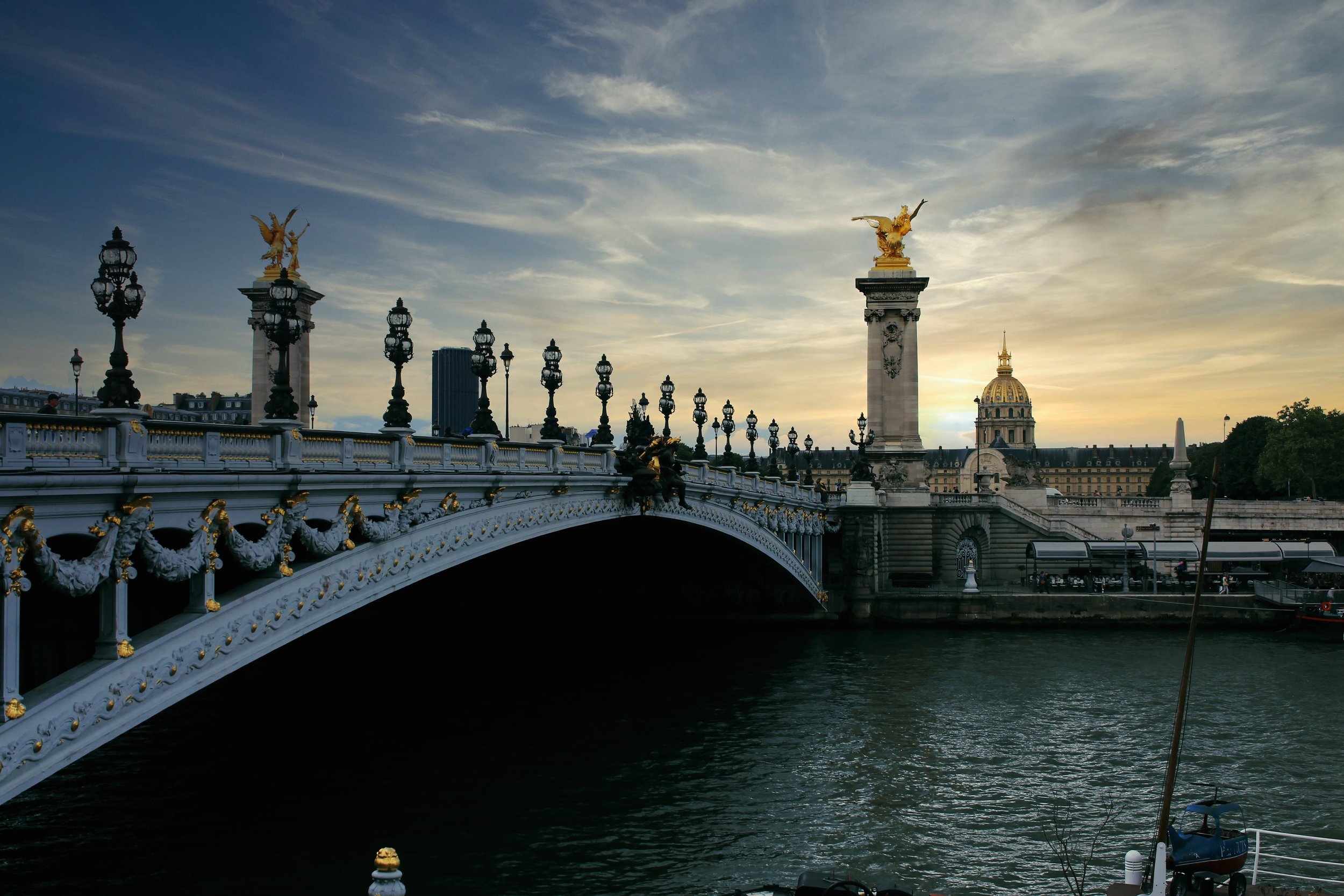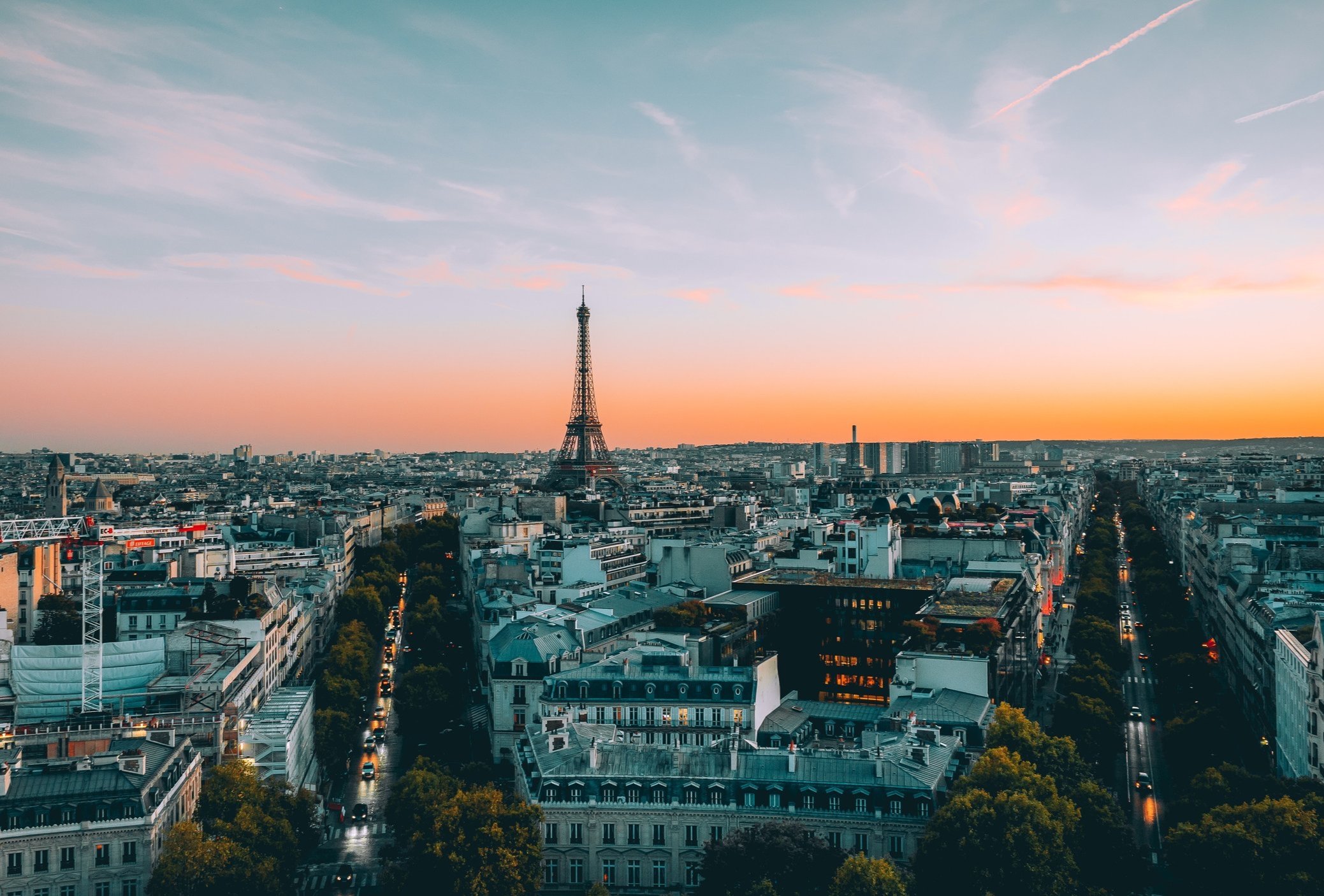
Discover the City of Lights
Paris is the subject of great films and the backdrop of many classic novels for good reason. Not only is it arguably the centre of the francophone world, the history and work of many great artists, philosophers and scientists came to fruition amongst these cobblestone streets. The city's history spans over several world wars and political uprisings, and these historical events can be explored through the monuments that still remain. And then there's the food. Gallic cuisine does the basics well in their Pain and Fromage (Bread and Cheese), boasts in its complexity through dishes such as the soufflé and macarons, but still provides the humble boulangerie staples such as the baguette jambon beurre (Ham & Cheese baguette) and pain au chocolat. Even with all of this, Paris is greater than the sum of its parts. It holds a certain unmistakable 'je ne sais quoi' that makes it a magical place to visit time and time again.
The city is made up of 20 Arrondissements and divided by the River Seine into the Left and Right Bank. Historically, the Left Bank was where artists such Picasso and philosophers such as Sartre and de Beavoir typically mingled. If you want to get in touch with your inner existentialist then don your favourite black turtleneck and head to Café de Flore (72 Boulevard Saint-Germain, 75006 Paris) or its neighbour Les Deux Magots (6 Place Saint-Germain des Prés, 75006 Paris). This is where de Beauvoir and Sartre used to pass their time. The Right Bank is where more commercial activity and political activity happens. It is also home to the chic Marais quarter.
Whilst Paris is an extraordinary place it can be a challenge for foreigners. Tourist traps are in abundance and if you don't know where to go it can feel quite cold as a city. The Parisians themselves are very culturally different to Australians. They don't have an instant warmth to them, but once you befriend a Parisian, you'll be friends for life. There are many subtle Parisian customs that can be difficult to navigate. People say that you know you have become Parisian when you change into more formal clothes to take out the rubbish. The dress code in Paris is more formal than other parts of Europe so if you'd prefer not to be treated like an American Tourist, don't dress like one.
The Essentials
Currency: Euro
Time Zone: GMT +1
Major Airports: Charles de Gaulle (CDG), Paris Orly (ORY)
Major Train Stations: Gare du Nord (towards Northern Europe), Gare de l’Est (towards the south)
Tipping: Not essential but appreciated at restaurants and in hotels, particularly those at the upper end (10% is reasonable)
Public transport: the city is well-connected by the metro, which is the fastest way to get around. For more adventurous travellers, there are also electric bikes and many streets now have bike lanes.
Exploring on your own
Paris is a great place to get lost in. Often the best finds come from wandering aimlessly. Two areas that are particularly good for this are the Marais and Montmartre. The major sites at the Marais include the Georges Pompidou centre and the Picasso Museum. However if you want to explore start at the Metro Stop St Paul, you can do the high st type shops and then weave between the streets starting from Rue Vielle du Temple. Weave in and around these streets to find fun little shops and bars working your way away from Rue de Rivoli. There is a cute little bar called La Perle on Rue Vielle du Temple. If you like Felafel, there is also a famous strip nicknamed ‘Felafel St’ and is home not only to delicious felafels but also offers a snapshot of Paris' Jewish Community. This is on Rue de Roziers.
Similarly, if you are exploring Montmartre, start at the Metro Stop Abbesses and explore. There is a lovely bakery called 'Coquelicot' that is worth trying, particularly for brunch. Montmartre is the 'old Paris' which predates the Haussmanian structure that the inner quarters have. The Sacre Coeur church is also nearby, and has a great views of the city so once you have weaved in and out of the streets it is worth taking a look.
Finally, one activity that it really worth doing is embarking on your own macaron tasting tour. Whilst Laduree and Pierre Herme are the most famous macaron houses, many of the local boulangeries and patisseries have excellent macarons too. Buy one from each stop and enjoy the variety of flavours. Be guided by the familiar smell of a good bakery, queues of French people and your intuition.
Things to do in Paris
MUSEUMS
Paris has countless museums and aside from the big three (Louvre, Centre Pompidou and Musee d’Orsay), these are worth a visit too:
L’Orangerie: located in the Tuilleries gardens, this museum boast many Impressionst masterpieces and the largest of Monet’s waterlilies
Fondation Louis Vuitton: owned by the world’s largest fashion house, this Frank Gehry-designed art museum hosts spectacular exhibitions
Musée Picasso: located in the historical Marais area, this museum houses the world’s largest collection of Pablo Picasso’s work
Bourse de Commerce: once a commodities exchange, this stunning building is now home to the private art collection of Francois Pinault
PaRIS CLaSSICS
La Tour Eiffel: this icon of the French capital and feat of 19th century engineering is worth a visit, boasting spectacular views
Galeries Lafayette: one of the most elegant department stores in the world, famous for its stunning stained-glass ceiling
Ladurée: famous for its macarons, the French sweets that melt on your tongue and have the perfect combination of crunchy exterior and smooth interior
Jardin de Tuileries: the sprawling gardens that run along the Seine spanning from the Louvre to the Place de la Concorde
Les Deux Magots: the famous brasserie in St-Germain-des-Prés that used to have Simone de Beauvoir, Jean-Paul Sartre and Ernest Hemingway as regulars
Food & WINE
Chez Georges: “A Parisian brasserie, has the lot: grubby decor, grumpy waitresses and simply superb cooking”
Bistro Paul Bert: a French bistro at its best - expect steak tartare, scallop carpaccio, côte de bœuf and other classics
Le Mary Celeste: small plates, craft cocktails and natural wines in the Marais
Aux Deux Amis: classic French fares and natural wines in the bustling Oberkampf area
La Curieuse Compagnie: an excellent cave à manger - wine bar with small plates, in the 10th arrondissement
Rue Princesse/Rue Guisarde: these two streets are home to around ten tiny restaurants, very busy but well-priced and simple, good food
Coffee in paris
France offers so much by way of good food and drink - except for coffee. It is often burnt, expensive and disappointing. However, courtesy of a wave of Aussies expatriating and French locals who have taken advantage of the working holiday visa you can now have your cake and eat it too à la Marie Antoinette. The following places serve a decent coffee.
Café Kitsuné: this popular coffee place now has four locations in the first and third arrondissements
Boot Café: best for takeaway as this place only seats about three people, located in the Marais
Partisan Café Artisanal: excellent coffee in the 3rd arrondissement with plenty of space to sit and wake up
Hollybelly: a great place for breakfast where you can get pancakes, granola, eggs and more with your coffee








